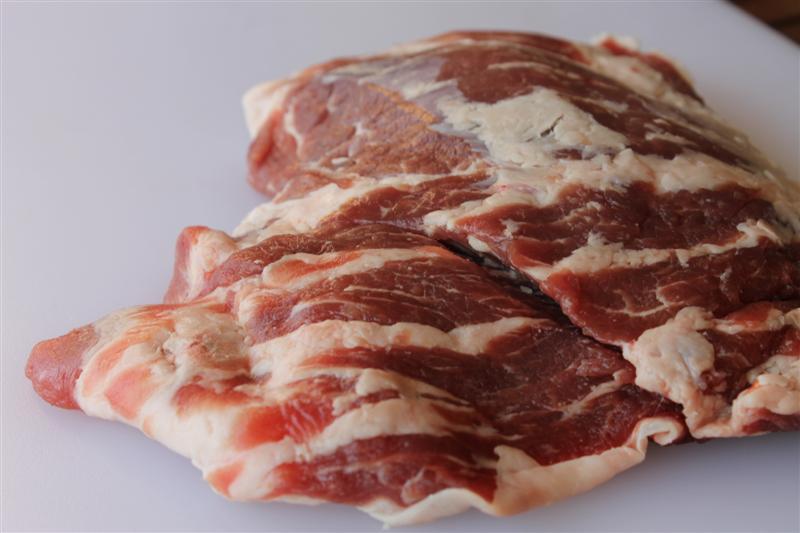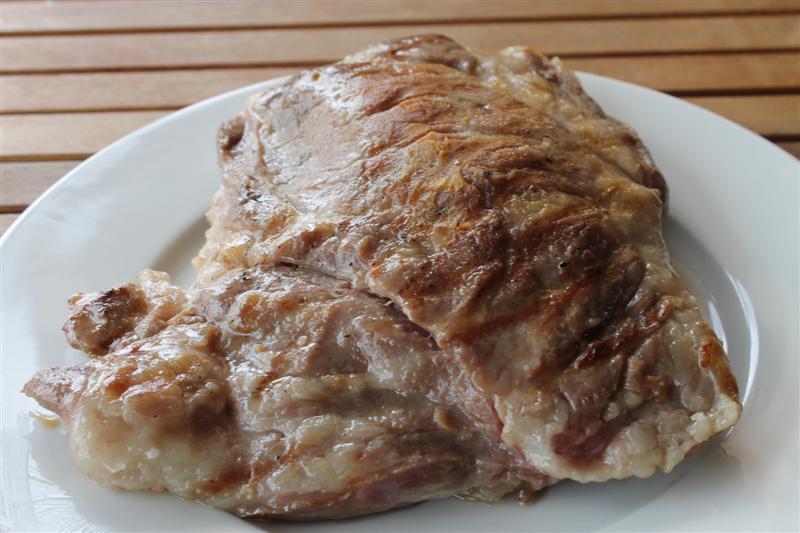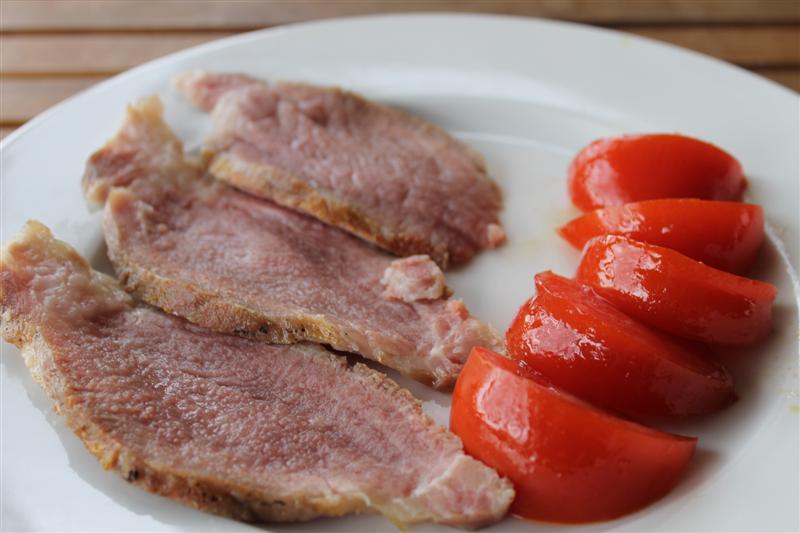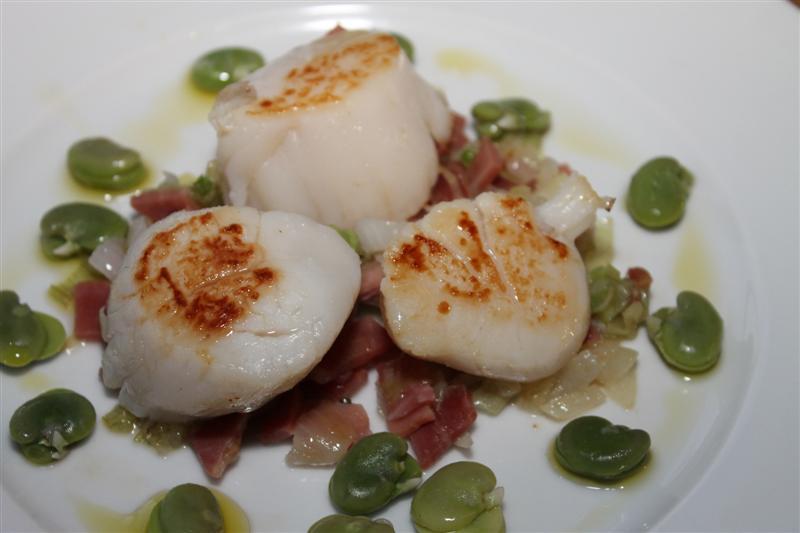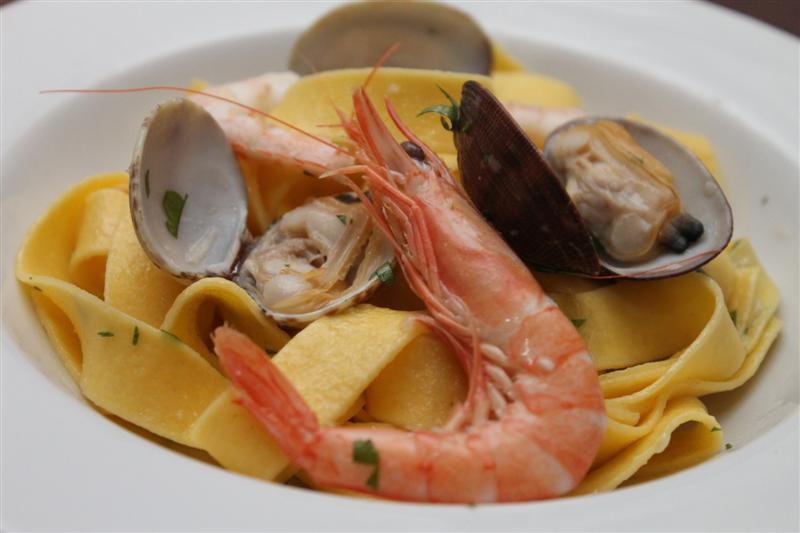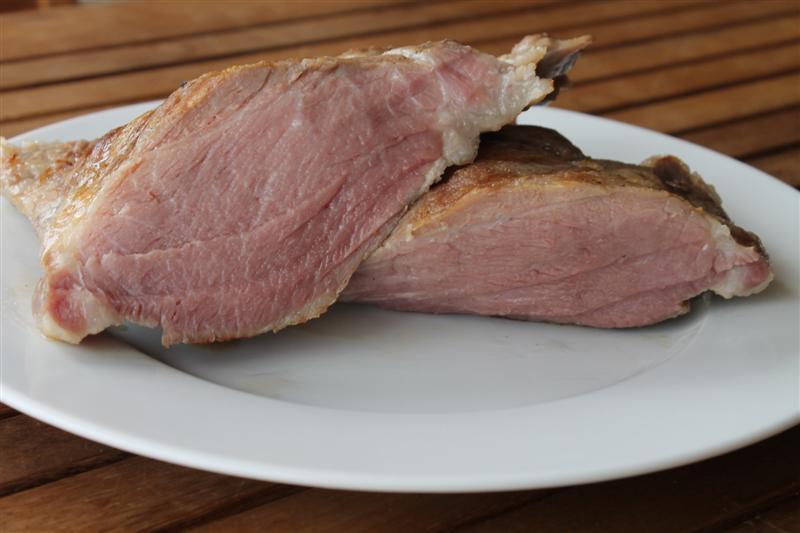
EnriqueB
participating member-
Posts
399 -
Joined
-
Last visited
Content Type
Profiles
Forums
Store
Help Articles
Everything posted by EnriqueB
-
Missing a barbecue, a torch comes great to cook eggplants for baba ganoush. I char the surface for about 5 minutes then cover with foil and it cooks inside with the residual heat: http://dorarnosella.com/2012/01/22/baba-ganoush-con-soplete/ Although I use it often after sous-vide for convenience, I still prefer a very hot cast-iron skillet or deep-frying for the browning.
-
Paul, I make a couple of 3-liter batches of gazpacho per week, which usually keep for 2/3 days. As soon as I finish preparation I pour it on vacuum-sealable tupper-style containers and make a vacuum on them. Keep in the fridge and, when they are served, re-vacuum as soon as possible. They keep well. Heston Blumenthal suggests to juice or blend one or two fresh tomatoes just before consumption and add them to the stored gazpacho to "regain its freshness". I do it from time to time but more often than not I don't bother.
-
I cook chicken breasts even lower (131F/55C), 1 hour for me, 3 hours to pasteurize for my family. I find it wondefully juicy and tender, but of course if you set your expectations extremelly high anything can disappoint... About the skin, the truth is that most skins do not sear very well after sous-viding, as they cook in a moist environment and the fast heat you apply not to overcook after the careful cooking is usually not enough for a perfect sear. To get the best you must devote some time to dry the pieces at a low temperautre before searing, which takes time.
-
When meat is going to be marinated and then cooked sous-vide I've read recipes doing it in two different ways: either marinating first, say overnigth, then cleaning the meat and cooking it sous-vide (without the marinade, same as with traditional methods); either putting together the marinate and the meat in the bag, vacuum-packing, maybe leaving it together for a while, then cooking the meat with the marinade, which is discarded at the end, just before searing. Has someone perceived differences between both methods? Which way do you prefer?
-
I learnt in a sidebar that the adequate ratio of salt in most recipes is between 0,6% and 1,5% of the total weight. This has changed the way I salt many foods, allowing me to salt precisely earlier, which comes handy for many dishes, instead of the "salt to taste: guess, try, add a bit more..." that most cookbooks recommend (which is ok for the final seasoning adjustment, but not very useful in many circunstances)
-
More ideas from Thomas Keller: cauliflower pannacotta (from The French Laundry) or cream with beet chips (from Ad Hoc at Home). If you have a Thermomix, there's a fantastic and healthy way of preparing it I recently discovered on this spanish blog: cut into pieces, put into the tmx, blend to a kind of "cauliflower cous-cous", add extra virigin olive oil, and cook for 20 minutes, 100ºC, speed 2, with the measuring cup on. No liquids, it just cooks with its own vapour. At the end blend at maximum speed, you get a creamy wonderful puree. I use it here as the base for an ibérico pork tenderloin sous-vide.
-
In gazpacho all vegetables are raw, just blended together with some vinegar, then extra virgin olive oil is added and emulsified. Optionally, the ingredients can be cut and infused together overnight for flavours to mix before blending. I understand that for the hot tomato soup you first saute the ingredients.
-
I have MyCook which is a clone of Thermomix. I use is mostly as one of the highest-power blenders available around here (it also cooks but I don't find it so useful for that, except for some sauces and to hydrate hidrocoloids). The kings of the show are Gazpacho and Salmorejo, the cold tomato soups typical from the south of Spain. Tomatoes are now in season (though september & october are the best months) and we consume at least 5 liters of Gazpacho every week at home during the summer. The texture of Gapzacho you get with a high-speed blender cannot be matched by any other blender.
-
A rule of thumb Nathanm has mentioned a couple of times is doubling the time for every 10ºC increase, but I think when going to the lower limit (from 80 or 70 to 60ºC) things take place even more slowly and the increase in time may be even higher. Many chemical reactions go faster with temperature in an exponential way.
-
The relation is very far from linear! And both texture and juiciness depend heavily on the temperature. I tried to summarize it here, but it is in Spanish. I find the messages from Nathan and Douglas about tough cuts very instructive about this.
-
Modernist Cuisine takes it to the limit and proposes 100 hours at 60ºC. Takes a long time but really works.
-
Of course it's a bit heavy but not that much when it's empty (full of stock and carcasses it is, but then I don't move it around until I carefully take out all the contents). I expected it to be heavier when I bought it. I am really happy with my 12-liter, as it saves me so much time. I can make bigger batches of stock and bean stews with respect to my other cookers, which is a big time-saver, then freeze what I will not use in the following days. Now I always have different stocks "on stock". My biggest problem is the space it takes up when not in use, and cleaning it as I have a small sink. The KR was the only model I could find of that size, that's why I bought it. It seems to have a better quality, design and durability, but the food will not be different from the food cooked with much cheaper coookers.
-
I have the 5L and 12L wide Kuhn-Rikons, as well as a couple from other brand with the standard taller shape. I find the wider base really handy, in fact nowadays I use the KRs by default and turn to the others only when I need the different size or shape. The wider base is great for browning the food, and I find it better for rices and stews where I can fit more meat pieces in just one row. It also heats faster as the wider base matches a bigger induction heating surface. And great for evaporating and reducing. The 5L is so good that I use it as my default braiser for most dishes, either pressure cooked or not. That said, I agree with Laura that as a first/only cooker, and having small burners, the standard shape will likely serve you better. Enrique
-
I always use a brine for regular soaking of beans. According to McGee, if I remember well (i'll try to look it up later), salt in the soaking water makes the posterior cooking faster, which is exactly the effect you have found, whereas it has no effect whatsoever on texture. On the other hand, salt in the cooking water makes the cooking a bit slower, which is why it is often added to the pot later.
-
It seems Heston's intention was precisely to have a sharp leek flavour, as he insists on cutting everything very small and cooking for less than 20 minutes to keep their flavour. That was the original part of the recipe to me, as any other recipe I've ever seen cooks the vegetables for at least 30 or 40 minutes. I've made it and found it really good, not mind-boggling but good.
-
That don't look like a scallop to me, what are you up to now? I wondered also, and found the answer in his excellent blog: it is a scallop sausage!!
-
Proving that this forum is a constant source of inspiration, I prepared this salad of sous-vide vegetables after reading ScottyBoy's post http://egullet.org/p1781761
-
Hi Toufas, is collar a part of the shoulder? In that case you won't find them here for Ibérico as they're always used for hams, only for "standard" pork, called "white pork" here. I think I've cooked those 60ºC/48 hours.
-
I have never prepared collar. That burguer sounds really nice, may I ask for the recipe?
-
I prepare all tender cuts of ibérico at 55ºC, time as needed for heat to reach core according to tables/apps (or longer for pasteurization), then quick sear. Works well with loin, tenderloin, and presa (pictures on dinner thread). Ibérico cheeks have become my all-time best meat for sous-vide, 36 hours at 65ºC, pictured on the dinner thread.
-
Sure, I cook all pork tender cuts (such as loin, tenderloin, ribs or "presa" --see pictures on the Dinner thread) at 55ºC. For me just time for temperature to reach core (i.e. "to get tender"), and for my wife longer pasteurization times as she's pregnant. BTW normal pork is nice, but ibérico pork is just marvellous cooked like this. Both hot and cold in bocadillos! Tough cuts I have done cheeks (also picture in the Dinner thread) and some part of the shoulder at 60 or 65ºC for 1-3 days. Also excellent (except for the 72 hours shoulder part)
-
I would call 'mealiness' to the texture of a pork shoulder that I cooked at 60ºC for 72 hours. I took one bag out at 48 hours and it was ok, but another at 72 hours was not good. Pork shoulder is also composed of many muscles and some of them may even be considered tender, so this was likely an issue of excessive time. But 2 hours at 57ºC for duck breast does not look especiallly long....
-
65ºC is too high for breasts, IMO. I started trying at 60ºC when I began "sous-viding", then reduced down little-by-little until 55ºC. Give them a try at 55ºC, they are much much better than 60ºC, you'll be suprised. About one hour for average size chickens, about three hours for pasteurization.
-
Picture attachments from my last post were lost somehow... New trial: Papardelle al vongole (plus shrimps) Fava (or are they called broad?) beans, fresh onions, serrano ham, sea scallops sous vide: Presa ibérica sous-vide with raf tomatoes: You may have Angus and Wagyu, but in Spain we have our ibérico pork! This is a tender cut called "presa" which is wondefully marbled and cooks nicely sous-vide at 55ºC, then seared. Doesn't need much more, so we just had it with tomatoes dressed with arbequina extra virigin olive oil and sherry vinegar. (edited to correct pictures)
-
I normally use a bit longer times, so I was not getting the same nice colours. Thanks!

